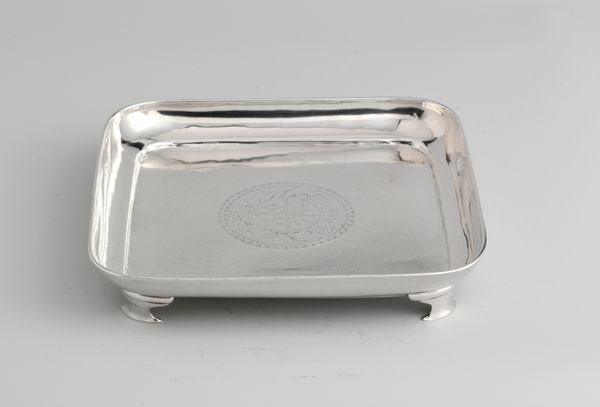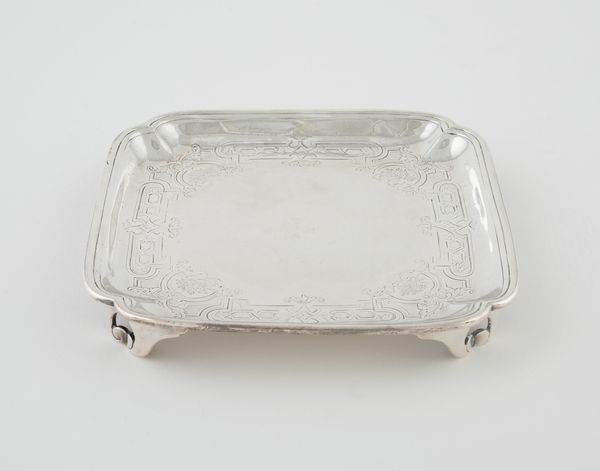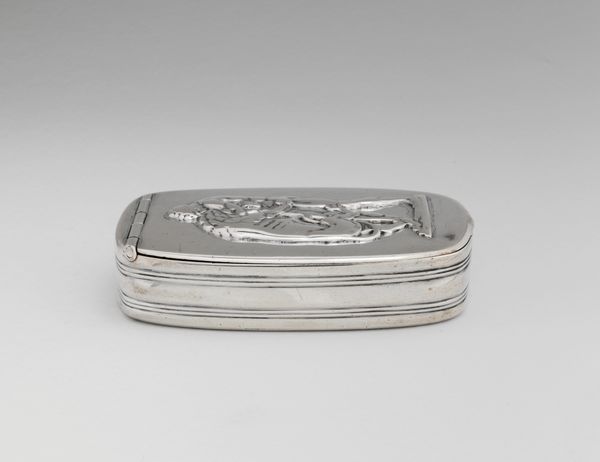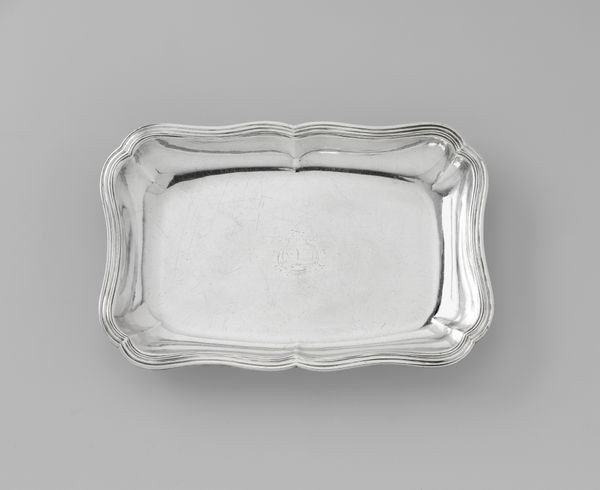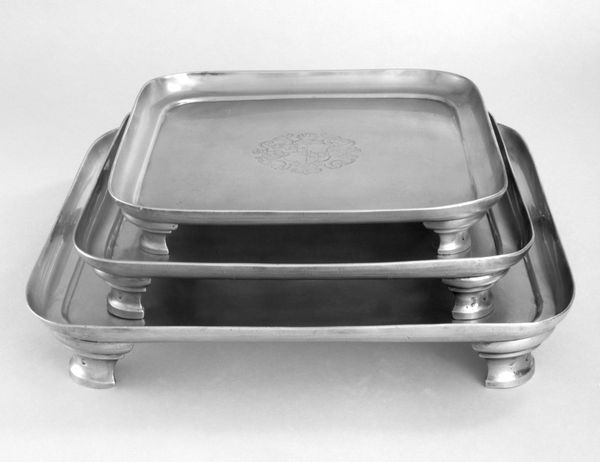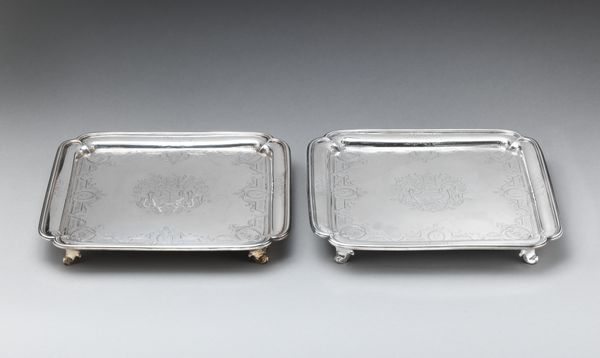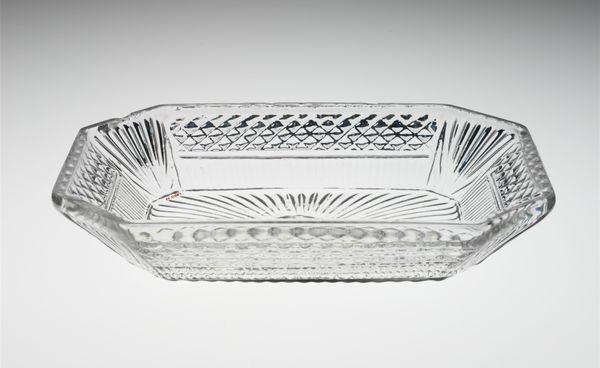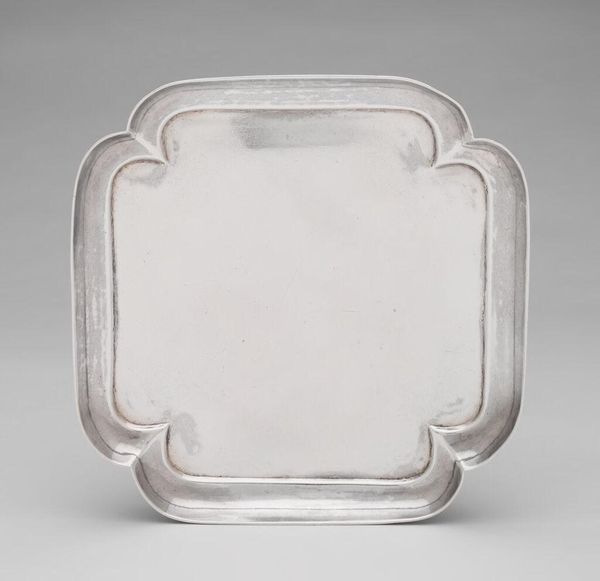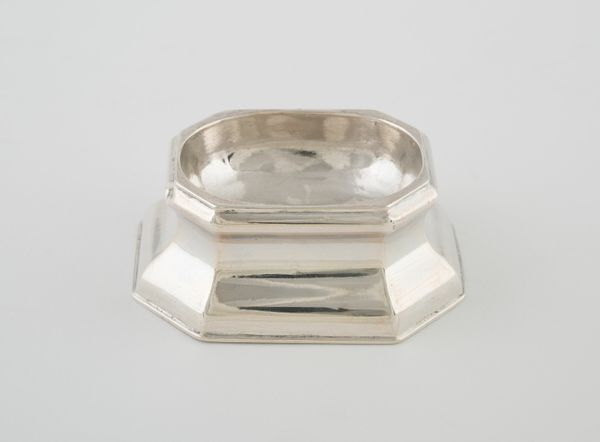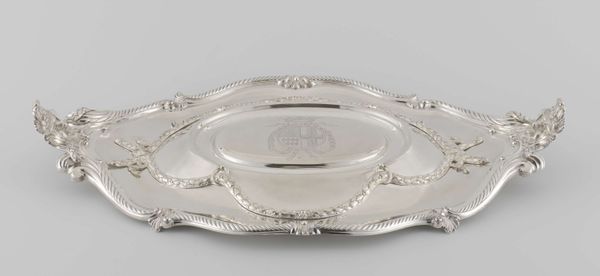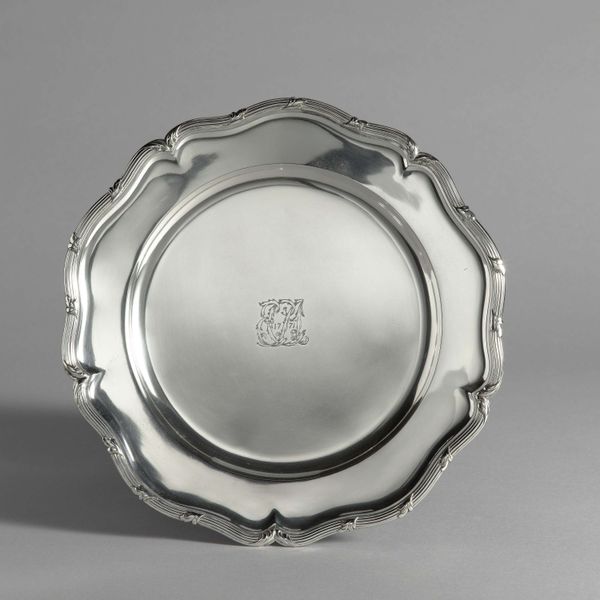
silver, metal
#
silver
#
baroque
#
metal
Dimensions: 7/8 x 7 1/4 x 7 1/4 in. (2.22 x 18.42 x 18.42 cm)
Copyright: Public Domain
Curator: Here we have "Waiter," crafted around 1724 by Paul de Lamerie. It's fashioned from silver and represents the Baroque style. Editor: Immediately, I'm struck by its understated elegance. Despite the grand style we associate with the Baroque, it's restrained, almost demure in its simplicity and size. The craftsmanship looks impeccable. Curator: Indeed. Note how the overall form relies on these rigorous geometric shapes that lend it a sense of stability and order. The rectangle dominates, softened by the curves of the legs and rim, while faint concentric rectangles define the recessed areas around the central decoration. It speaks to both symmetry and controlled variation. Editor: That central decoration! It appears to be a coat-of-arms, faintly visible. It suggests this object served a function tied to status and display of lineage. Silverware, even of modest size, had symbolic importance. Do we know anything about the family crest? Curator: Unfortunately, details of that crest have been lost. The slightly worn finish further suggests active use. The Baroque period prized ornament but always within a defined framework; the crest acts as a centralizing element that would complete the object's visual balance. Editor: Thinking about its place in history, I envision it catching candlelight, bearing small delicacies. Silver is evocative – of ritual, hospitality, quiet wealth. Perhaps it has also a feeling of intimate service... more personal and immediate compared to larger, grander vessels for banquets. Curator: I concur. De Lamerie's skill resides in achieving high quality of materials and design without ostentation, it is truly successful in refining Baroque elements. The texture itself seems meticulously rendered, it isn't flashy or heavy, it's functional! Editor: For me, it transcends its utilitarian purpose; it serves as an echo of social structures and unspoken narratives from a time of aristocracy and formal codes, but remains visually appealing due to the subtlety of its creator. Curator: I find the brilliance of the formal choices and arrangements contribute, on their own, to make it interesting as a pure arrangement of shapes. It speaks volumes to this. Editor: And its history whispers of power, status, and beauty interwoven.
Comments
No comments
Be the first to comment and join the conversation on the ultimate creative platform.
